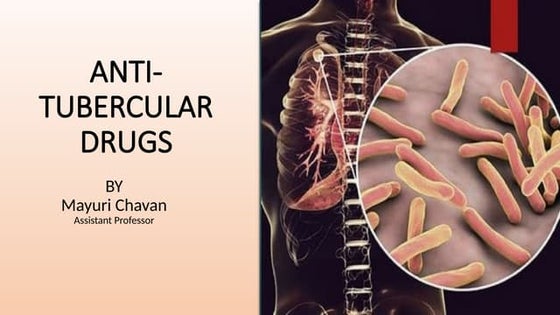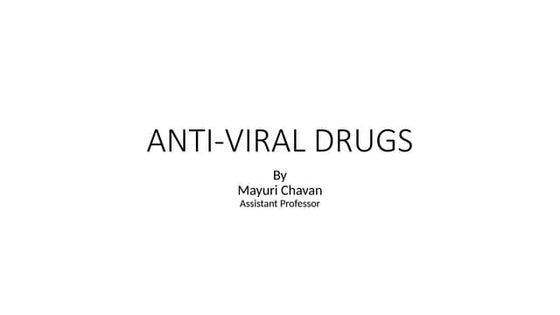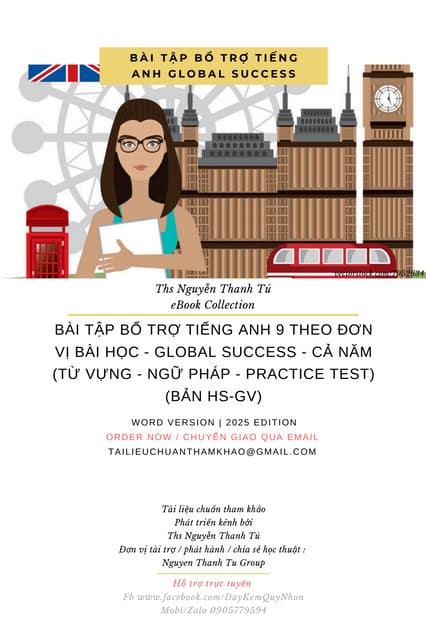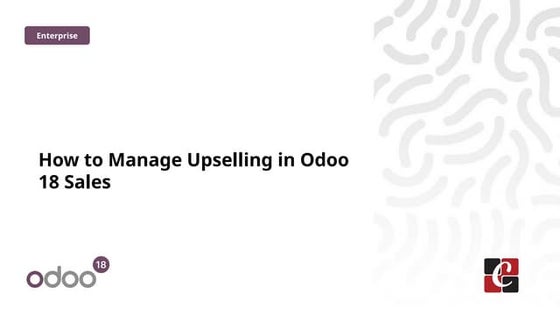Chemotherapy of Malignancy -Anticancer.pptx
- 2. CANCER Cancer is the uncontrolled proliferation and abnormal multiplication of cells within the body. A mass of tissue formed as a result of; o Abnormal o Excessive o Uncoordinated o Autonomous and o purposeless o Proliferation of cells
- 5. • In the cancer cell, the cell cycle control is disrupted by: • Abnormal growth factor function. • Abnormal CDK function (Cyclin-dependent kinases) • Abnormal DNA synthesis • Abnormal decreases in negative regulatory forces due to mutation in the tumours suppressor gene.
- 8. I. Alkylating agents • These compounds produce highly reactive carbonium ion intermediates which transfer alkyl groups to cellular macromolecules by forming covalent bonds. • The position 7 of guanine residues in DNA is especially susceptible, • Alkylating agents may react with carboxyl, hydroxyl, amino, sulfhydryl and phosphate groups of bio macromolecules.
- 9. MOA
- 10. 1.Nitrogen mustard • Mechlorethamine, Bendamustine Cyclophosphamide, Melphalan, Chlorambucil, Ifosphamide i. Mechlorethamine (Mustine HСІ) • It is the first nitrogen mustard; highly reactive and local vesicant. It is no longer used systemically. • Mustine is now occasionally used by topical application on cutaneous T cell lymphoma. • Adverse effects • Bone marrow suppression, nausea •Vomiting, diarrhoea, alopecia, gut ulcerations • Amenorrhea in women and reduced Spermatogenesis in men.
- 11. ii. Cyclophosphamide • Cyclophosphamide is a prodrug converted to the active metabolite aldophosphamide in the liver
- 12. • Pharmacokinetics • Cyclophosphamide is well absorbed on oral administration with high bioavailability. Phosphoramide mustard Acrolein It can be given orally or IV. • Adverse effect • Cyclophosphamide causes cystitis due to a metabolite acrolein • cyclophosphamide is severe hemorrhagic cystitis. • It is associated with dysuria and haematuria due to irritation of bladdermucosa by acrolein. • It is dose-limiting toxicity and can be reduced by adequate hydration and co-administration of I.V. mesna (2-mercapto-ethane-sulphonate). • Mesna is also excreted in urine where it binds and inactivates acrolein,thus preventing hemorrhagic cystitis.
- 13. • Uses • Cyclophosphamide is a commonly used alkylating agent. • It also has immunosuppressant properties. • It is useful in the treatment of testicular cancer and sarcomas.
- 14. 2. Ethylenimines :- ThioTEPA, Altretamine • Altretamine • It is hexa methyl melamine (HMA) which acts by alkylating DNA and proteins. • Altretamine is used in recurrent ovarian carcinoma for palliative treatment. • Adverse effect • Bone marrow depression and neurological effects
- 15. 3. Alkyl sulfonates • Busulfan • This alkylating agent is highly specific for myeloid elements; granulocyte precursors being the most sensitive, followed by those of platelets and RBC. • It produces little effect on lymphoid tissue and G.I.Т. • Busulfan 2nd choice drug to imatinib for chronic phase of myelocytic leukaemia • Busulfan can cause skin pigmentation, Hyperuricaemia, gynaecomastiaand pulmonary fibrosis.
- 16. 4.Triazine • Dacarbazine, Procarbazine (Methyl hydrazine) • Dacarbazine • It acts by methylating DNA and interfering with its function. • Dacarbazine is primarily used in combination regimens for hodgkin’s disease & malignant melanoma. • Adverse effects • Nausea, vomiting, Flu-like symptoms, neuropathy and Myelosuppression
- 17. 5. Nitrosoureas • Carmustine, Lomustine • Carmustine • It causes cross-links in DNA and RNA, leading to the inhibition of DNA synthesis, RNA production and RNA translation (proteinsynthesis). • Carmustine also binds to and modifies (carbamoylates) glutathione reductase. • This leads to cell death. Hepatic and rapid with active metabolites.
- 18. 2.PLATINUM COORDINATION COMPLEXES i. Cisplatin Mechanism of action • The platinum coordination complexes enter cells and are hydrolysed intracellularly to produce a highly reactive moiety which causes cross linking of DNA • It is a heavy-metal complex with highly effective antineoplastic activity. • It is a CNS drug and acts on both dividing as well as resting cells
- 20. • Pharmacokinetics • DNA damage Cisplatin is administered intravenously. • It is highly bound to plasma proteins and gets concentrated in kidney, liver, intestines and testes. • It poorly penetrates BBB and is slowly excreted in urine. • Adverse effects i. Nephrotoxicity ii. Ototoxicity iii. Electrolyte disturbances: hypokalaemia, hypocalcaemia and hypomagnesaemia are common. iv. Neuropathy v. Anaphylactic shock vi. Cisplatin has mutagenic, teratogenic and carcinogenic
- 21. 3. Antimetabolites • DNA or of coenzymes involved in nucleic acid synthesis. • Antimetabolites competitively inhibit utilization of the normal substrate or get themselves incorporated forming dysfunctional macromolecules.
- 22. 1. Folate antagonist :- • 1. Folate antagonist :- Methotrexate, Pemetrexed i. Methotrexate (MTX) • Methotrexate is one of the most commonly used anticancer drugs. • It is a cell cycle specific (CCS) drug and acts during S phase of the cell cycle. • It has antineoplastic, immunosuppressant and anti inflammatory effects • Methotrexate (MTX) is a folic acid (FA) antagonist.
- 23. Mechanism of action • Methotrexate structurally resembles folic acid. • It competitively inhibits dihydrofolate reductase enzyme and prevents the conversion of DHFA to THFA, thus depleting the intracellular THFA. • Tetrahydrofolic acid is necessary for the synthesis of purines and thymidylate, which, in turn, are necessary for DNA and RNA synthesis
- 24. • Pharmacokinetics • Methotrexate is well absorbed after oral administration and can also be given I.M., I.V. or intrathecal. • It is bound to plasma proteins, poorly crosses the BBB, and most of the drug is excreted unchanged in urine • Methotrexate is most effective on cells in the 'S' phase of the cell cycle. Resistance to methotrexate may be due to: • Decreased drug transport • Reduced formation of active metabolites. • Increased synthesis of DHFR • Altered DHFR with reduced affinity for methotrexate
- 25. • Drug Interactions Salicylates, sulfonamides, penicillin, aspirin and probenecid inhibitthe renal tubular secretion of methotrexate. • Side effects :- i. Mucositis & bleeding ii. Bone marrow suppression iii. Loss of hair (Alopecia) iv. Damage to GI mucosa and ulceration v. Impaired wound healing vi. Damage to gonads vii. Growth inhibition in children viii. Teratogenicity
- 26. 2. Purine antagonist • 6-mercaptopurine (6-MP), 6-Thioguanine (6- TG), Azathioprine, Fludarabine • 6-Mercaptopurine, thioguanine, fludarabine, pentostatin and cladribine are purine analogs which act as purine antagonists. • They are structurally similar to purines.
- 27. 6-Mercaptopurine • 6-Mercaptopurine (6-MP) is the thiol analog of hypoxanthine. • 6-MP and 6-thioguanine were the first purine analogs to prove beneficial for treating neoplastic disease.
- 28. TIMP TIMP
- 29. • Pharmacokinetics • 6-MP is administered orally and has poor penetration through the BBB. • It is metabolized by xanthine oxidase and its metabolite is excreted in urine. • Adverse effect • Bone marrow depression • Myelo suppression, Mucositis, gut damage, nausea, vomiting • Uses • Allopurinol is frequently used in cancer patients receiving chemotherapy to prevent hyperuricaemia and to reduce the dose of 6-MP, thus reducing its toxicity. • 6-MP is used mainly in acute lymphocytic leukaemia.
- 30. 3.Pyrimidine Antagonist • 5-Fluorouracil (5-FU), Cytarabine, Gemcitabine • MOA of 5-Fluorouracil (5-FU) • 5-Fluorouracil (5-FU) is a pyrimidine analog.. It is activated to a nucleotide metabolite which inhibits the enzyme thymidylate synthetase. • Due to this, it inhibits the synthesis of thymine and thereby inhibits DNA synthesis • The active metabolites of 5-FU are also incorporated into DNA and RNA leading to inhibition of DNA and RNA synthesis
- 31. • Pharmacokinetics • Inhibits DNA and RNA synthesis • 5-FU is given intravenously and has a short t 1/2 of 10-20 min. • Metabolised by an enzyme called dihydropyrimidine dehydrogenase(DPD). • Adverse effect • Bone marrow suppression • Myelosuppression • Mucositis, diarrhoea, nausea vomiting. • Peripheral neuropathy (hand-foot Syndrome) • Uses • 5 -FU is used anticancer drug especially of colon, rectum, stomach,pancreas, liver, urinary bladder, head and neck • Topical uses: Fluorouracil is available as an ointment for topical use in many precancerous (1%) and cancerous (5%) conditions: Seborrhoeic keratosis, Warts (Verrica vulgaris), Polyps, Benign skin tumours ,Superficial basal cell carcinoma
- 32. 4. Vinca Alkaloids • Vincristine, Vinblastine, Vinorelbine • Vincristine and vinblastine are Vinca alkaloids obtained from the leaves of Vinca rosea, the periwinkle plant. Vinorelbine is a semisynthetic derivative. • They are spindle poisons. • They are cell cycle specific and act on the 'M' phase of the cell cycle.
- 33. MOA
- 34. • Pharmacokinetics • Vinca alkaloids are metabolised in the liver by microsomal enzymes and are largely excreted through the gut. • Vincristine (oncovin) It is a rapidly acting drug, very useful for inducing remission in childhood acute lymphoblastic leukaemia, but is not good for maintenance therapy. • Adverse effects i. Peripheral neuropathy and alopecia. ii. Vincristine also causes ataxia, nerve palsies, autonomic dysfunction(postural hypotension, paralytic ileus, urinary retention) and seizures. iii. Bone marrow depression is minimal
- 35. Taxnes :- • Paclitaxel, Docetaxel • Pharmacokinetics • Paclitaxel is administered by I.V. infusion. • Uses :- • It is useful in advanced breast, ovarian, lung, oesophageal and bladder cancer. • Adverse effect • Bone marrow suppression • Peripheral neuropathy, myalgia and hypersensitivity reactions
- 36. MOA
- 37. Epidophyllotoxin: • Etoposide, Tenoposide • Etoposide(TOPOISOMERASE-2 INHIBITOR) • It is a semisynthetic derivative of podophyllotoxin, a plant glycoside. • Epidophyllotoxin is cell cycle specific with activity in late S & G2 phase. Topiomerase II creates and reseals double- stranded DNA breaks and therefore it is involved in DNA replication & repair. • It inhibits Topiomerase II by stabilizing topiomerase II-DNA complex & prevent the unwinding of DNA.
- 38. • Uses • Etoposide is used in testicular tumours • Lung cancer • Hodgkin's and other lymphomas, carcinoma bladder and stomach. • Adverse effect • Alopecia • Leucopenia and G.I.T. Disturbances
- 39. Antibiotics:- • Actinomycin D,(Dactinomycin), Doxorubicin, Daunorubicin, Mitoxantrone, Bleomycins, Mitomycin • These are products obtained from microorganisms and have prominent antitumour activity. • Doxorubicin & Daunorubicin • Daunorubicin and doxorubicin are anthracyclines antibiotics & having antitumour activity • These drugs intercalate between DNA strands and block DNA as well as RNA synthesis. • Their more prominent action is to combine with and activate topoisomerase-2 causing breaks in DNA. • They also generate quinone type free radicals. Maximum action is exerted at S phase, but toxicity is usually exhibited in the G2 phase
- 40. • Uses • Daunorubicin used in acute myeloid and lymphoblastic Leukaemia • Doxorubicin used in breast, thyroid, ovary, bladder and lung cancers, sarcomas and neuroblastoma. • Adverse effects i. Cardiotoxicity ii. ECG changes, arrhythmias and hypotension, alopecia, iii. Stomatitis, vomiting and local tissue damage iv. Urine may be coloured red v. Bone marrow suppression GI disturbances and cardiomyopathy with CCF




























































![Anthelmintic.[Pharmacology]](https://cdn.slidesharecdn.com/ss_thumbnails/anthelmintic-200607092955-thumbnail.jpg?width=560&fit=bounds)

























































